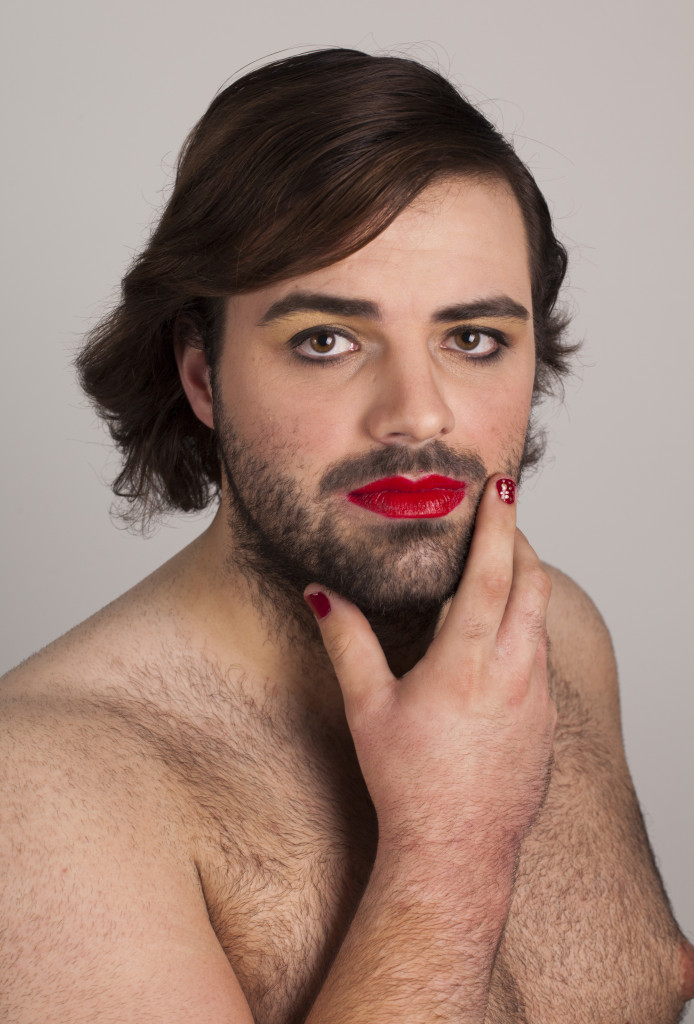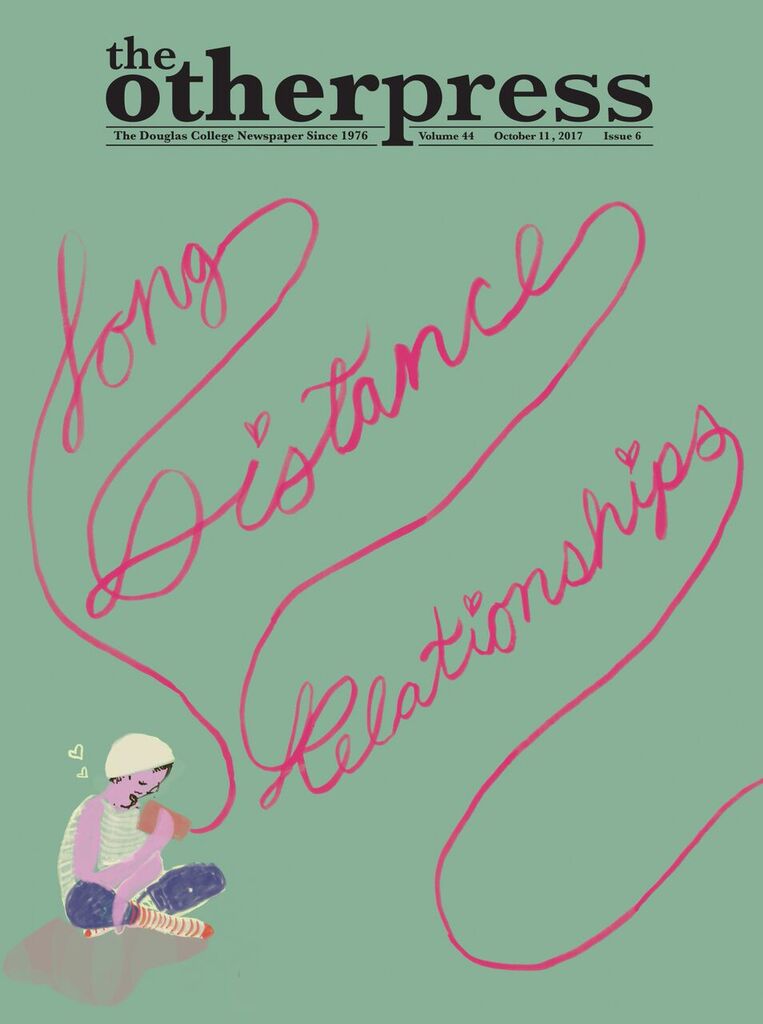Marketing and the heterosexual man’s need to be fabulous
By Carleigh Baker, Contributor
You always have to make choices. Think about the culture we’re in. I do work with teenagers, and most of the boys I know when you meet a 13-year-old boy, the codes of masculinity are causing them enormous pain.
-Junot Diaz
Nobody needs bronzer.
No one, regardless of age, race, gender, or sexual orientation. The pastiest, most cadaverous of us do not require bronzer, as in, a life-or-death scenario. Brazilians, ball waxes, eye(guy)liner, pan(man)tyhose. But all these things are within your grasp, just a credit card click away.
Despite the crushing, insecurity-fueled beauty ideals that have been foisted on women for hundreds of years, we don’t actually need to conform to one size, one shape, or one hair colour. One global standard for pubic hair, as if it was decided at the United Nations. Men don’t have to wax their backs, hide their bald spots, and somehow maintain the body and skin quality of a lithe, 12-year-old farm boy. Nobody has to do this.
But we do. We indulge in these beauty trappings, and the extent to which we pursue them provides the beauty continuum. From fashion’s current faux-anarchists: nerd glasses poised on a gaunt and bearded face, to the spray-tanned guy-lined, blow-dried Jersey Shore d-bags. Refuse to find your place on the continuum, and you’ll make the people on the bus nervous—or at least, until American Apparel hijacks your look, and packages it up as the Next Big Thing.
Morgan Spurlock, creator of Supersize Me, continues his mandate of probing the superfluous with his new documentary, Mansome. With an air of wide-eyed revelation, the first-hand arbiter of the outrageous discovery that eating Big Macs makes you fat, marvels at the recent boom in men’s grooming products.
Spurlock explains “When guys are looking in the mirror and saying, ‘I’m not good enough, I’m not handsome enough, I need to fix this in order to be that perfect image,’ for me that points to a bigger problem.”
Spurlock cites ‘70s manly men Burt Reynolds and Robert Redford as examples of a less insecure time for men, drawing this conclusion based on their abundance of body hair. The filmmaker claims that men of this era were more confident and authentic, and worries that current marketing trends are robbing men of their masculinity.
“The commoditization of men is really helping to push this agenda of looking a certain way. Business starts to drive that type of thought process, and when you pour millions of dollars into it, it starts to reshape the psyche.”
This is true, but it isn’t news. And weren’t the unwaxed heroes of old still encouraging mass consumption, appearing in ads for Corvettes (penis extensions) and Coors Light (liquid courage)?
Things go very wrong for Spurlock when he links the commoditization of men to what he calls the feminization of his gender. For one, he’s assuming that women have the monopoly on insecurity. How do you suppose bald men felt about their lot in life in the hirsute ‘70s? Or men that just weren’t that hairy? A lack of chest hair tagged you as merely a boy in a shag carpeted man’s world, and in case the Corvette and the beer weren’t working for you, there were an abundance of hair enhancement products available. Just because Burt Reynolds didn’t appear on billboard advertisements for them doesn’t mean his image wasn’t being used to enforce a beauty standard. Even manly ‘70s men had 99 problems, and for many, insecurity was one. Just ask the Hair Club for Men, founded in 1976.
“I’m not only the president of hair club for men. I’m also a client.” Sy Sperling, founder of Hair Club for Men, states boldly in a commercial from 1982.
A man who fusses about his appearance, even excessively so, is not inherently feminine. This is a nasty generalization that manages to be offensive to all involved. A man’s choice to groom himself impeccably constitutes no more of an affront to his gender than a woman’s choice not to shave her legs. As far as the proliferation of fashion items such as murses and mantyhoses, Spurlock’s contention that this is a new phenomenon sadly typifies the modern pop culture approach to anthropology: if it didn’t happen 15 minutes ago, it didn’t happen.
Aside from the music industry, where gender bending as a fashion statement has been embraced since at least the 1970s (see: David Bowie, Alice Cooper, Boy George, Michael Jackson, Brett Michaels, etc.) one only has to look to the wigged, powdered, hose-wearing aristocratic men of the 18th century as a prime example of androgynous fashion. Both genders wore elaborate powdered wigs, garters, hoses, and pointed shoes, though only women enjoyed the spine warping joys of corseting. For both sexes, this elaborate style of dress served to highlight one’s position in society, since anyone who had to toil for a living would not wear heels. Nor could they afford to do so.
And what about the modern incarnation of this trend, the Metrosexual? If you take a man, remove all his body hair, shape his nose until it’s too small to breathe through, plump his lips, give him a spray tan, apply guy liner and lip gloss, buff his nails, and feather his hair, you are going to have a pretty feminine looking dude. Undeniable. Spurlock didn’t manage to find any truck drivers or loggers or fishmongers for his documentary, who actually claimed to be going to these lengths as part of their daily regime. His wealthy, show business test subjects don’t exactly speak to the needs or preferences the masses—which is not to say that there are not those of us among the commoners who don’t aspire to this aesthetic. For the wealthy heterosexual men who choose to partake, androgynous style was, and still is, an assertion of status. And those who follow these trends are searching for the same status. So spins the big wheel of human weirdness.
[hr]
Vulnerability marketing: the accidental brilliance of Sy Sperling and the Hair Club for Men
When Sy Sperling went to his marketing team for a TV ad campaign, they gave him two options. The first advertisement showcased an attractive, chestnut-locked man playing tennis, horseback riding, and just generally being a stud. The other spot featured Sy Sperling, holding up a photo of himself in less hirsute days and mumbling those iconic words: “I’m not only the president of Hair Club for Men, I’m also a client.” Stiff and wooden, Sy was no television actor, so the team went with the first ad. When it didn’t do as well as expected, they pulled the ad, and gave Sy a try.
According to the documentary Roots: The Hair-Raising Story of a Guy Named Sy, this is when things took off for the company. Men remembered the slogan, but they also identified with Sy, who had actually felt the social sting of premature baldness. Sy’s presence was, in the words of mustachioed ‘80s icon Geraldo Rivera “so disarming,” men couldn’t resist.
Sy’s willingness to appear vulnerable in front of his client base paid off hugely for him. He also allowed his brand to appear in several jokes and top 10 lists on The David Letterman Show. He’s appeared on Late Night with Conan O’Brien and The Tonight Show with Jay Leno, leaving no doubt in the minds of potential clients that he’s in on the joke.
This kind of marketing was revolutionary in the ‘80s, but it’s still pretty untapped today. Makes you wonder how it would go over in the botoxed, tweezed and airbrushed marketing world of 2012.


